In September, a shelter and emergency preparedness specialist at the United Nations-affiliated International Organization for Migration (IOM) warned the City Council’s Committee on Immigrant and Refugee Rights that tent camps can last far longer than expected. Experts on refugees and migration who spoke to the Weekly agreed with that assessment, and said the winterized tent camps Mayor Brandon Johnson plans to use as temporary shelters for asylum seekers are susceptible to becoming longer-term settlements.
Emails obtained by the Weekly reveal that Committee Chair Andre Vasquez (40th Ward) discussed the camps with Joseph Ashmore, the IOM specialist, last month. In an email exchange following the discussion, Ashmore provided materials on mass shelters that explain topics such as preparedness, violence prevention, and community involvement.
Ashmore emphasized that tent camps are “a last resort,” adding in his email to Vasquez, “They can be unsustainable, can last for much longer than expected, and are expensive to run and maintain.” Ashmore declined requests for an interview.
Vasquez told the Weekly he spoke to people with international experience in such camps “who reiterated that going that route should be the last resort, due to their experience of things that could go wrong.” As a result of those conversations, he said he voiced his concerns “directly to the [Johnson] administration” before making a public statement.
Since August 2022, more than 18,500 asylum seekers have arrived in Chicago, most of them bussed here by authorities in Texas. After arriving at the city’s landing zone, they’re sent to police stations to await placement in one of the city’s public shelters. Some have been at police stations for months due to a lack of space in the shelter system, which Johnson has been rapidly expanding to try to keep up with the influx of buses from border states. More than 3,000 people are currently staying at police stations, and in many cases they’re sleeping outside. About 500 people are staying at O’Hare or Midway airports.
In September, Johnson signed a $29 million contract with GardaWorld Services and its subsidiary Aegis Defense Systems to build and staff “winterized base camps” for asylum seekers.
City officials have repeatedly stated the camps are meant to be temporary. At a contentious public meeting on October 24 at Thomas Kelly College Prep in Brighton Park about a camp the city is planning for a site at 38th and California, Ald. Julia Ramirez said, “The city is asking a lot of Brighton Park with this plan. This is temporary, but we all stay here, we’re from here, and we’ll be here.” Deputy Mayor of Immigrant, Migrant and Refugee Rights Beatriz Ponce de León and Deputy Chief of Staff Cristina H. Pacione-Zayas also reiterated the intended temporary status of the camps at that meeting.
But in other cities, such camps have lasted far longer than originally planned, and the experts who spoke to the Weekly said that it could happen in Chicago as well.
“It doesn’t matter how temporary a place of refuge is intended to be, in most cases people end up having to stay longer than expected because they don’t have many other options.”
The United Nations High Commissioner for Refugees (UNHCR) defines refugee camps as “temporary facilities” and “a short-term solution to keep people safe during specific emergencies,” while also highlighting that “emergency situations can become protracted resulting in people living in camps for years or even decades.”
“First and foremost, they’re not refugee camps,” said Pacione-Zayas at a press briefing Thursday, describing the campsite in Brighton Park. “Unfortunately that’s not the designation that the federal government has provided for the individuals that are seeking asylum and other migrants.”
“Refugee,” “asylum seeker,” and “migrant” are terms that have different legal ramifications in the U.S. An asylum-seeker is someone who has left their country seeking protection from persecution, but whose request for sanctuary is still being processed and has not yet been recognized as a refugee. Not every asylum seeker will ultimately be recognized by a court as a refugee, though every person recognized as a refugee was at one point an asylum seeker.
The process of applying for asylum can take years. Nationally, more than four out of every ten asylum cases filed in 2000 were still pending in 2021, according to data compiled by the Transactional Records Access Clearinghouse. As of September, 8,546 Venezuelan asylum seekers in Chicago had a pending hearing, for which the average wait time was more than two and a half years.
Chicago’s base camps are likely to house asylum seekers and migrants regardless of their case proceedings, and so technically they’re not refugee camps.
A former UNHCR employee with over five years experience in refugee response said that national context matters when assessing the permanence of camps. While camps do become permanent in most refugee crises, the majority of refugees (seventy-six percent) are hosted by low and middle income countries and there are differences between the options available to a Western nation such as the United States, and a less resourced nation, she said. She added that a country like the United States can stem migrants at the border and send people back to their country of origin, which can reduce the need for camps more quickly than in other contexts.
However, asylum seeker and migrant reception centers in the West could “become sort of a ghetto,” the former UNHCR employee, who asked not to be named in this article, said. “Probably they would just blend into the town as a neighborhood—but probably a neighborhood that starts out of poverty, and [they’ll] have a really hard time becoming more than that.”
Whether housing refugees or asylum seekers, camps that meant to be temporary often wind up lasting longer than intended, said Melissa Gatter, an anthropologist at the University of Sussex who has studied refugee camp dynamics.
“Ultimately, it doesn’t matter how temporary a place of refuge is intended to be, in most cases people end up having to stay longer than expected because they don’t have many other options,” Gatter said. “It’s the case for most refugee camps and it will likely be the case for this base camp, regardless of what they’re calling it.”
The former UNHCR employee said that temporary camps also become protracted when the people staying in them are stuck there, the likelihood of which is determined by the host country’s immigration policies. If new arrivals aren’t integrated into the local economy, they can become desperate and turn to illicit means of survival or become dependent on aid.
“When people don’t have access to things like jobs or they cannot physically leave the camp or they can’t really be that mobile, that’s when they start to settle where they are,” Gatter said. “It’s less about the camps and more about people’s economic opportunities.”
The fact that GardaWorld is first and foremost a security company suggests that “there’s going to be a high level of policing of people’s movements, whether or not it’s formal or informal,” she added. “Anywhere that you have thousands of people in like cots, beds, whatever it is—whenever you have people in rows, it’s going to be militarized or policed in some way.”
Additionally, camps can be extremely bureaucratic, and U.S. courts can be slow to process asylum seekers because domestic resettlement infrastructure has been reduced in recent years. Record-low refugee resettlement during the Trump administration has led to closures of 134 domestic resettlement offices since 2017, representing a thirty-eight percent cut in capacity. “I think the status of these people as ‘waiting’ might go on for longer than we predict in other places,” Gatter said.
Asked Thursday how the administration intends to ensure the camps don’t become permanent, Pacione-Zayas reiterated that the structures are prefabricated and temporary.
“Our intention, as we’ve always said from the beginning, is resettlement. We want people to be self-sufficient, self-determined, self-actualized,” she said. “So, as long as we are pairing [migrants] with the appropriate case management and wraparound services, and having a housing stock in which we can have temporary asylum seeker emergency rental assistance, we will be moving people along into self sufficiency and out of a base camp, into a temporary shelter.”
Camp infrastructure can also remain long after migrants have moved out of them and the camps are shut down. The materials Ashmore provided to the Immigration Committee include detailed examples this happening during the European response to more than a million migrants arriving in 2015 and 2016.
Germany built winterized reception centers, including single-family tents and prefabricated structures, for housing refugees short-term while they waited for longer-term accommodation in 2015. The reception centers evolved from short-term to mid-term accommodation sites to provide additional support during the asylum application process. In all, over ninety percent of the people spent less than twenty-four hours in the facilities. By July 2016, all the refugees were resettled, but the centers are still standing today, ready to operate within thirty days if more migrants arrive.
Another dynamic that often arises between host and migrant communities is tension over economic concerns and harmful narratives about migrants fueled by disinformation, which can sometimes turn violent.
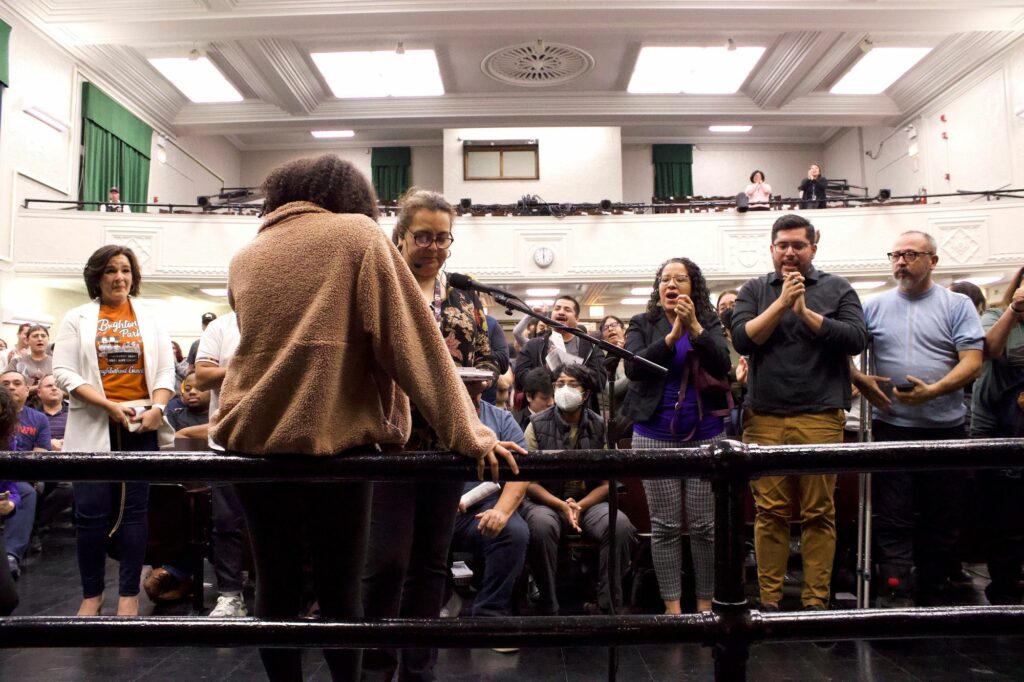
At Tuesday’s public meeting, a woman from Colombia and a volunteer who spoke on behalf of several other asylum seekers both said the new arrivals in Chicago want jobs, but many are stuck waiting for federal Work Authorization Permits. While the Biden administration approved work permits for Venezuelans who arrived before July 31, the status of those who came after that date is in limbo. Thirty thousand migrants from Venezuela, Cuba, Haiti, and Nicaragua will be allowed to enter the United States each month with two-year work permits, and another 40,000 asylum seekers will be able to use a government app to make appointments with officials at border crossings.
Biden’s announcement of expedited work permits for asylum seekers was followed by another saying it will begin deporting Venezuelan migrants who lack a legal basis to remain in the country. Secretary of State Antony Blinken described the new deportation policy as “a key piece” of the administration’s migration policy. The first flight departed for Caracas, Venezuela on October 18 with 127 people on board.
Residents who gave public comment at Tuesday’s meeting were roughly evenly divided. Those opposed cited concerns about their property values and fears of increased crime, while those in favor spoke about the importance that Chicago remains a city that welcomes immigrants.
Carolyn Brown, who has taught at Kelly since 2003, said she has “concerns over how temporary the situation really is,” adding that all Chicago residents need more stable housing. She said she’s taught students who have faced housing instability her entire career. Migrants “need walls [and] the dignity of living indoors,” she said.
Regardless of which side they were on, most speakers at the Kelly meeting agreed on the need for more permanent and dignified shelter for new arrivals, and more federal and state money to do so. However, receiving federal money would come with aligning with federal policy.
Gatter said that the U.S. government is likely not interested in putting new migrants in permanent housing. She explained that, in the eyes of the federal state, the migrants who haven’t officially been accepted as asylum seekers have no legal basis to be in the country, so there’s technically no political impetus to move them out of temporary shelters, where they can more easily be controlled and monitored for deportation.
International law does offer some protections for asylum seekers who have not yet received official refugee status, but they are limited. The former UNHCR employee said that while international law has a fundamental principle of “non-refoulement” that forbids a country receiving asylum seekers from returning them to their country of origin where they are likely to be persecuted, this principle doesn’t hold if case managers determine there is not a direct threat to their life.
She said that in legal terms, “asylum is not really applicable if you’re going to die of starvation because you can’t find a job.”
From January 2019 to December 2020, the U.S. government returned close to 70,000 asylum seekers and migrants to dangerous conditions in Mexico to await their asylum claim decision under the Migrant Protection Protocols (MPP). A report by Médecins Sans Frontières found that seventy-five percent of migrants returned to Mexico under the MPP had been victims of attempted kidnapping.
While the U.S. works on and funds UNHCR projects in the Global South, it doesn’t collaborate with the UNHCR in its own management of migration within American borders, Gatter said. “You see them instead turn into their own governmental mechanisms, keeping track of people and controlling them until we figure out where they’re going to go.”
The “last thing” the city should do is treat asylum seekers as a kind of eyesore or burden on the community. “They need to be seen as possible contributors and possible collaborators,” Gatter said. “I think anything where you allow people freedom of movement and the ability to also see themselves as potentially contributing to the city, as being valued…that’s going to have a positive effect on how this is handled, and how they’re going to be received, and how they’re going to be perceived as well by fellow Chicagoans.”
Wendy Wei is the Weekly’s immigration editor and covers solidarity between communities of color. Jim Daley is an investigative journalist and senior editor at the Weekly. Matt Champan is a freelance journalist focused on transparency and policing.

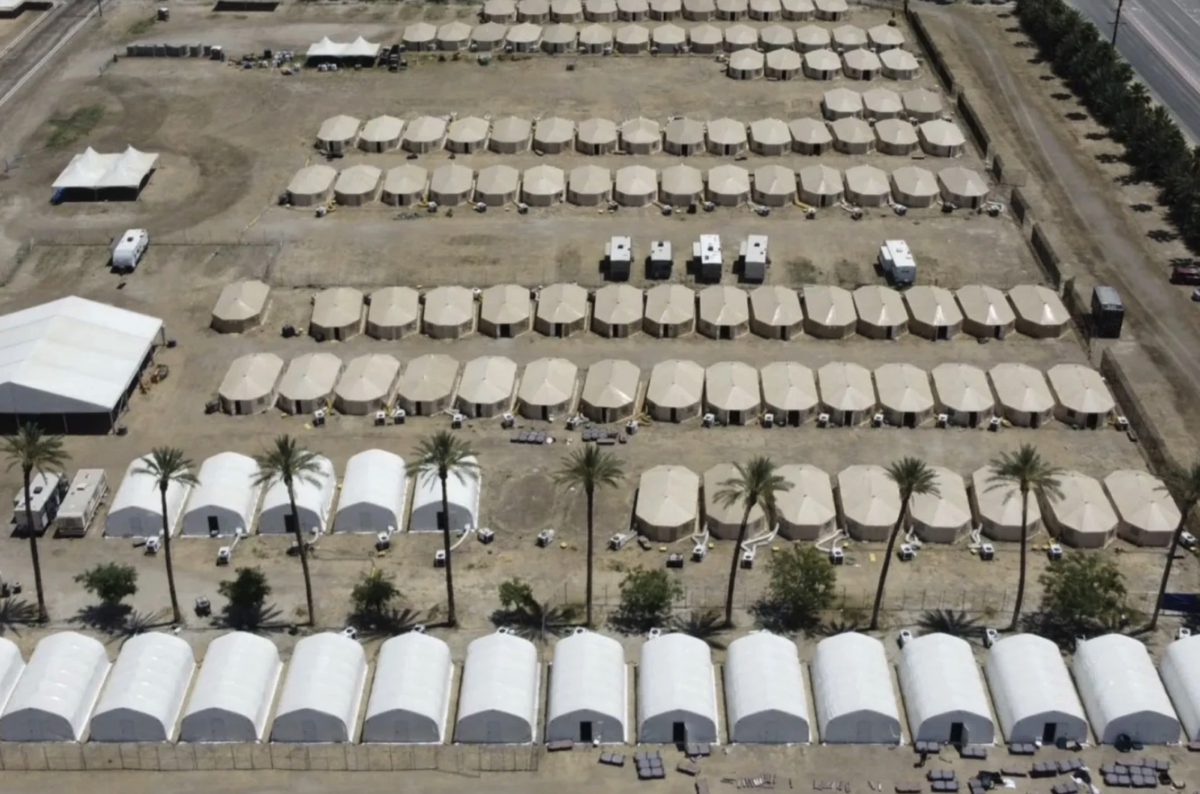
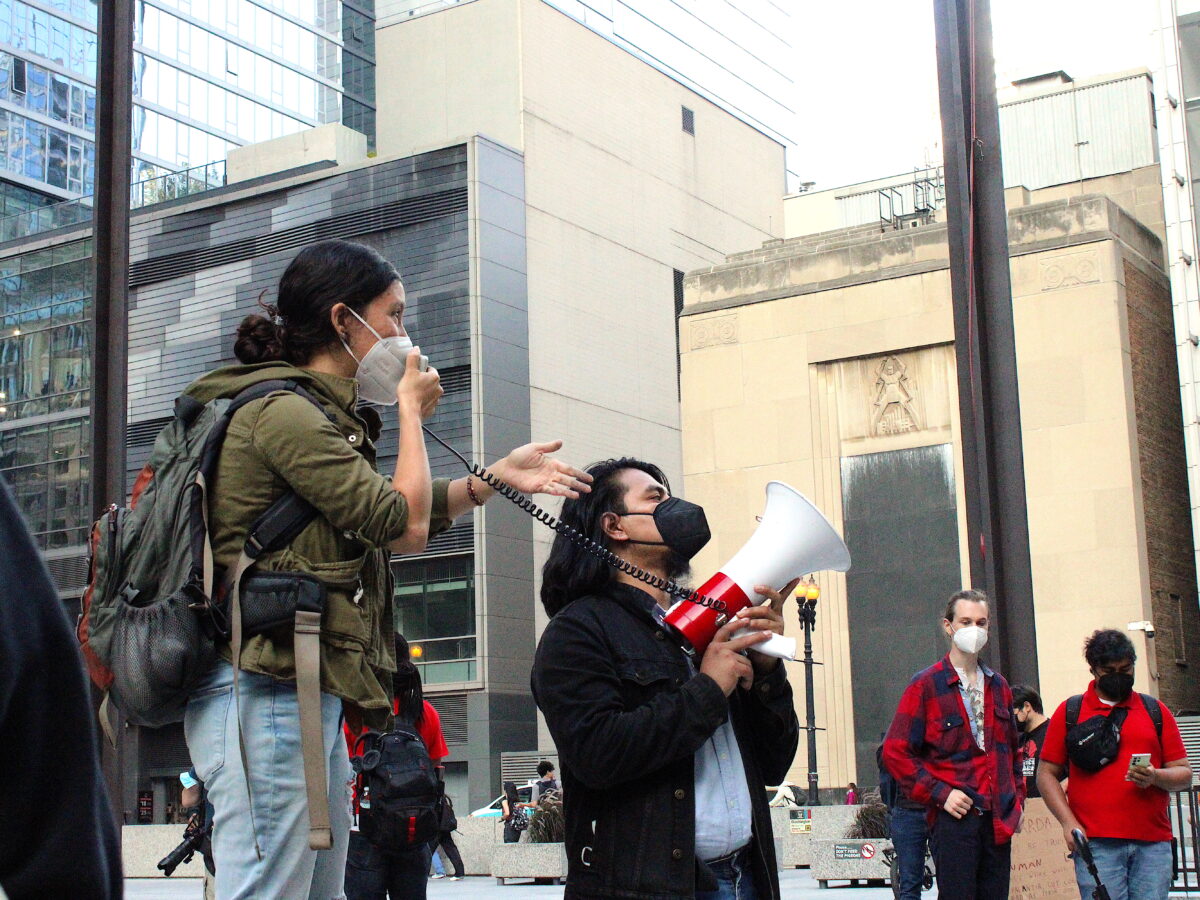
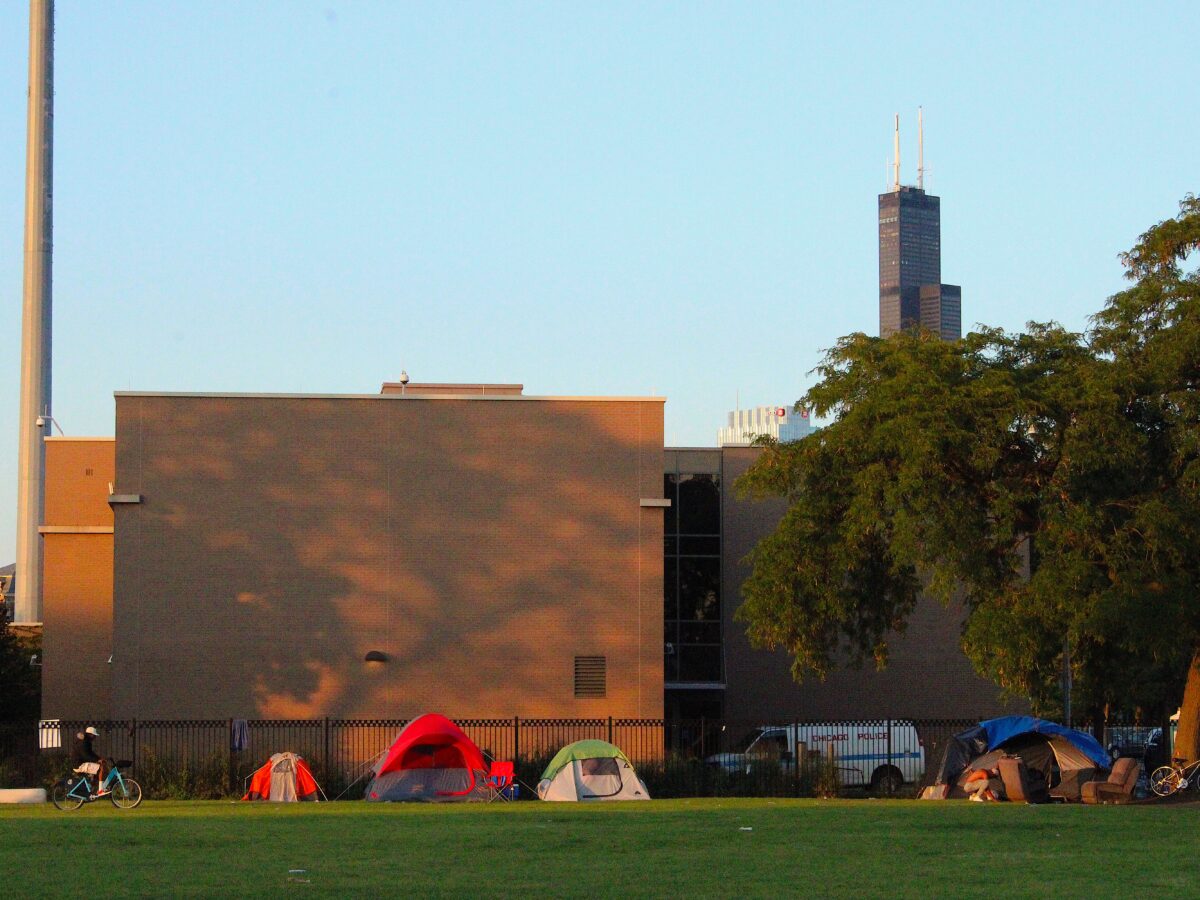
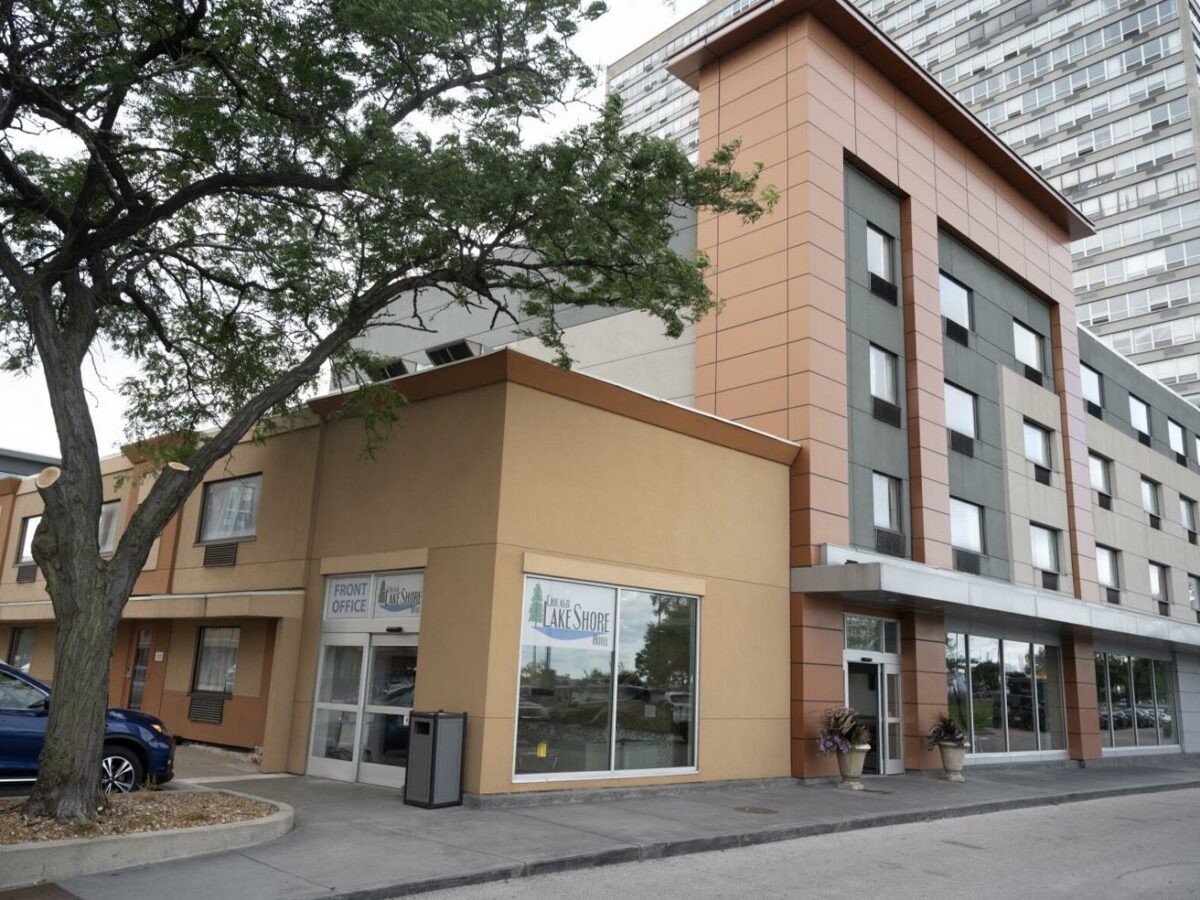
In the spirit of the Golden Rule I wonder if it’s good practice to bestow on a migrant a cannabis cartridge. I spent many years as a houseless vagabond. Cannabis was still prohibited then. Hurray Governor Pritzker. Cannabis, we called it marijuana, was the one thing that would have made many of the more morbid moments of hitchhiking more interesting and less painful. Indeed, I lost a respite home in Louisville because of pot prohibition. It seems to me if I should do unto others as I would have done to me, it would be good practice.
All of which is to say I enjoyed the article. Very informative. Nice to see Carlos Rosa’s photo.